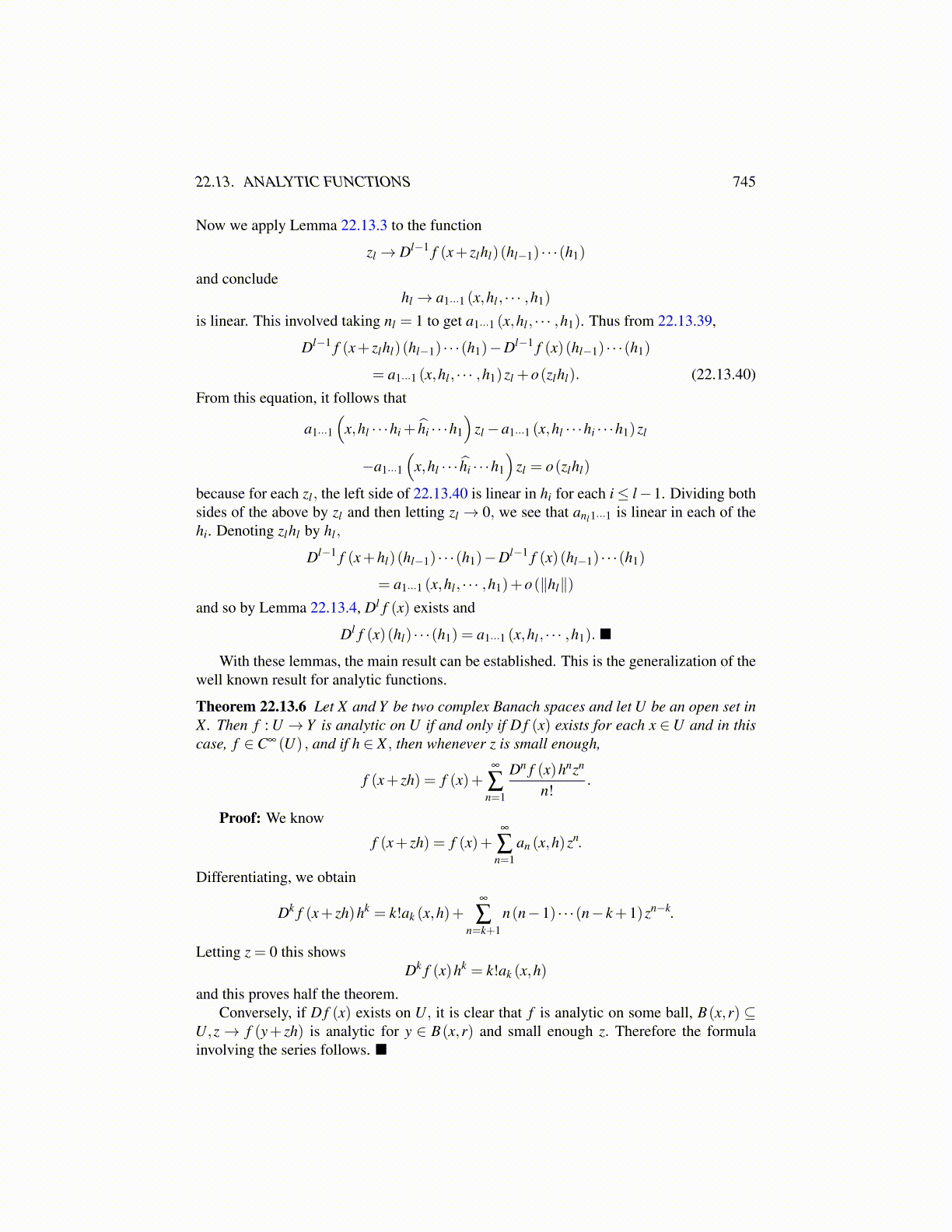
22.13. ANALYTIC FUNCTIONS 745
Now we apply Lemma 22.13.3 to the function
zl → Dl−1 f (x+ zlhl)(hl−1) · · ·(h1)
and concludehl → a1···1 (x,hl , · · · ,h1)
is linear. This involved taking nl = 1 to get a1···1 (x,hl , · · · ,h1). Thus from 22.13.39,
Dl−1 f (x+ zlhl)(hl−1) · · ·(h1)−Dl−1 f (x)(hl−1) · · ·(h1)
= a1···1 (x,hl , · · · ,h1)zl +o(zlhl). (22.13.40)
From this equation, it follows that
a1···1(
x,hl · · ·hi + ĥi · · ·h1
)zl−a1···1 (x,hl · · ·hi · · ·h1)zl
−a1···1(
x,hl · · · ĥi · · ·h1
)zl = o(zlhl)
because for each zl , the left side of 22.13.40 is linear in hi for each i≤ l−1. Dividing bothsides of the above by zl and then letting zl → 0, we see that anl1···1 is linear in each of thehi. Denoting zlhl by hl ,
Dl−1 f (x+hl)(hl−1) · · ·(h1)−Dl−1 f (x)(hl−1) · · ·(h1)
= a1···1 (x,hl , · · · ,h1)+o(∥hl∥)and so by Lemma 22.13.4, Dl f (x) exists and
Dl f (x)(hl) · · ·(h1) = a1···1 (x,hl , · · · ,h1).
With these lemmas, the main result can be established. This is the generalization of thewell known result for analytic functions.
Theorem 22.13.6 Let X and Y be two complex Banach spaces and let U be an open set inX. Then f : U → Y is analytic on U if and only if D f (x) exists for each x ∈U and in thiscase, f ∈C∞ (U) , and if h ∈ X , then whenever z is small enough,
f (x+ zh) = f (x)+∞
∑n=1
Dn f (x)hnzn
n!.
Proof: We know
f (x+ zh) = f (x)+∞
∑n=1
an (x,h)zn.
Differentiating, we obtain
Dk f (x+ zh)hk = k!ak (x,h)+∞
∑n=k+1
n(n−1) · · ·(n− k+1)zn−k.
Letting z = 0 this showsDk f (x)hk = k!ak (x,h)
and this proves half the theorem.Conversely, if D f (x) exists on U, it is clear that f is analytic on some ball, B(x,r) ⊆
U,z→ f (y+ zh) is analytic for y ∈ B(x,r) and small enough z. Therefore the formulainvolving the series follows.